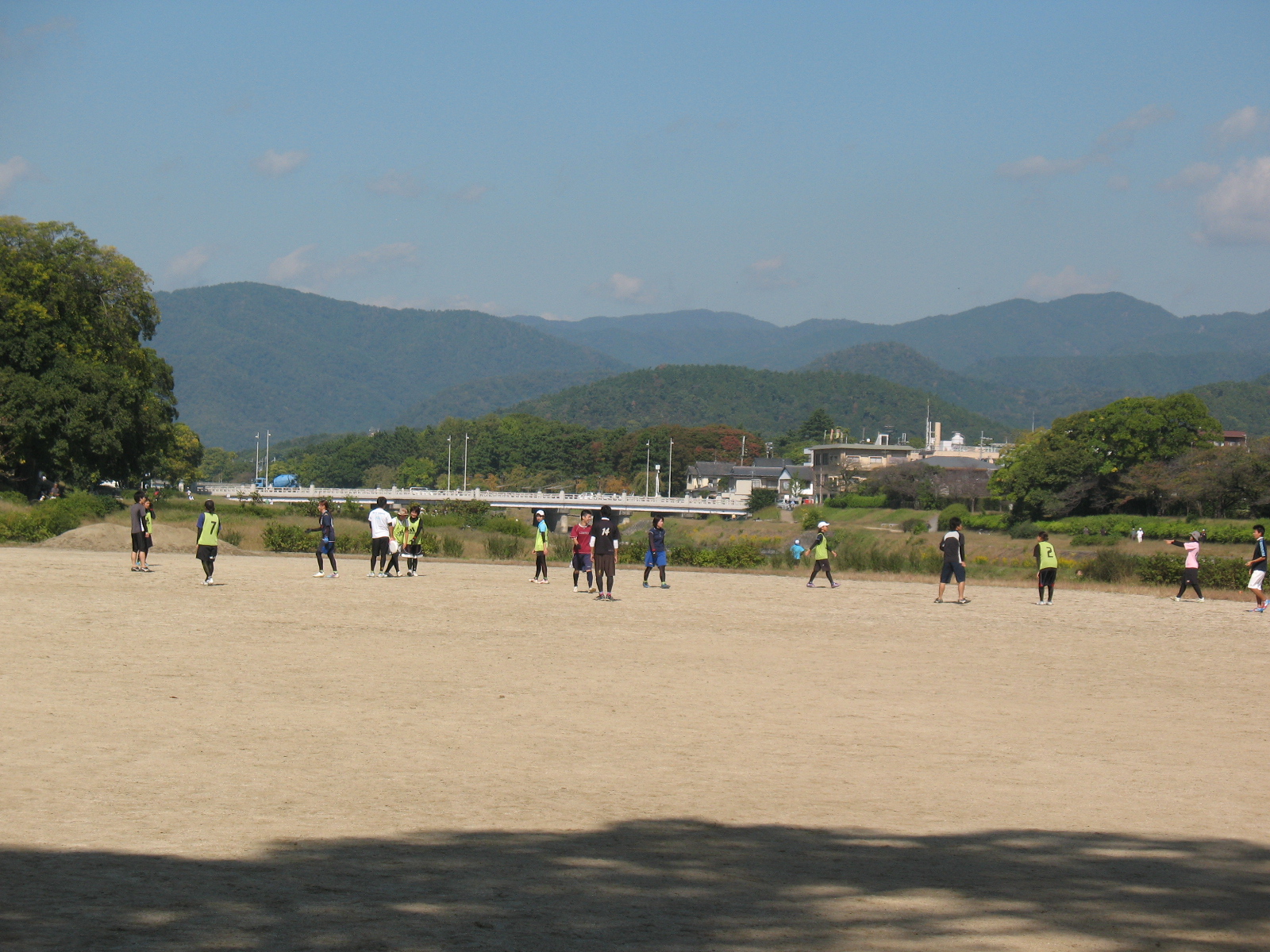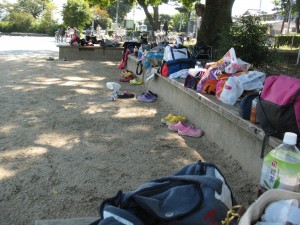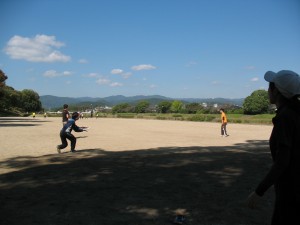The Kyoto University Soft Tennis circle was definitely a new experience for me. It’s been years since I’ve participated in a sports team, let alone voluntarily involved myself in sports. However, after listening to my Japanese friends recommendations, I decided that a sports team would be the most authentic Japanese university experience.
I learned pretty quickly that I am not very good at soft tennis. The members of the soft tennis team had been playing since elementary school, so naturally compared to them I am just terrible. The circle itself has a lot of members from multiple different universities in Kyoto; even after going to so many practices I doubt I have met them all. The core group is comprised of many sempai who instruct us on our drills and yell things like “Nice shot!” “Good volley!” throughout practices. However, due to the constant change of people attending, I was always reintroducing myself and I found it harder to make close friends. The drills themselves were monotonous and mostly involved a lot of standing around and waiting, which enabled only short chats with other members. Though the circle is pretty relaxed, there is a definite differentiation from the older and newer members. Sempai typically inform the members of the drills. Everyone bows before every drill and we gather and bow after practice, which is definitely a little different from America.
One of the girls would walk home in the same direction as me after practice, and this would give us a chance to actually get to know each other better. Though these conversations were superficial, it was nice to have this opportunity. This led to more members greeting me when I arrived at practice, and there was more of an attempt to make me feel welcome. From this incident I found that just by communicating more with the members made them less hesitant to talk to me, and encouraged them to ask me questions. At first, they were nervous that I wouldn’t be able to communicate with them, but when they found that I was capable enough I found that they were actually really curious. Personally, I learnt that it is important to be as friendly as possible and be open with people. I feel like this is an important component in getting people to want to talk with you, and therefore further the relationship from acquaintance to friend.
Overall, I wouldn’t say that my experience with the circle was a negative one. The members were very accommodating, I was allowed to join the circle without paying the entrance fee and a racket was lent to me each practice. However, it was difficult to become part of the group. Since I did not pay the entrance fee, I was not invited to join for prepaid nomikais, dinners and the circle weekend trip. Participating in the circle was definitely an interesting experience, however it was not as successful as I had hoped. However, this experience gave me a deeper view into a typical Japanese circle, and I learned a lot more about kohai/sempai relationships as well.



